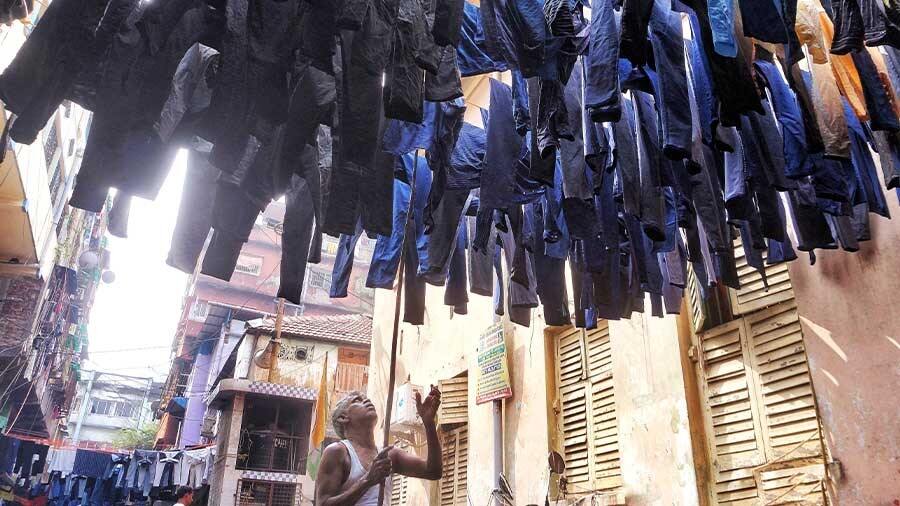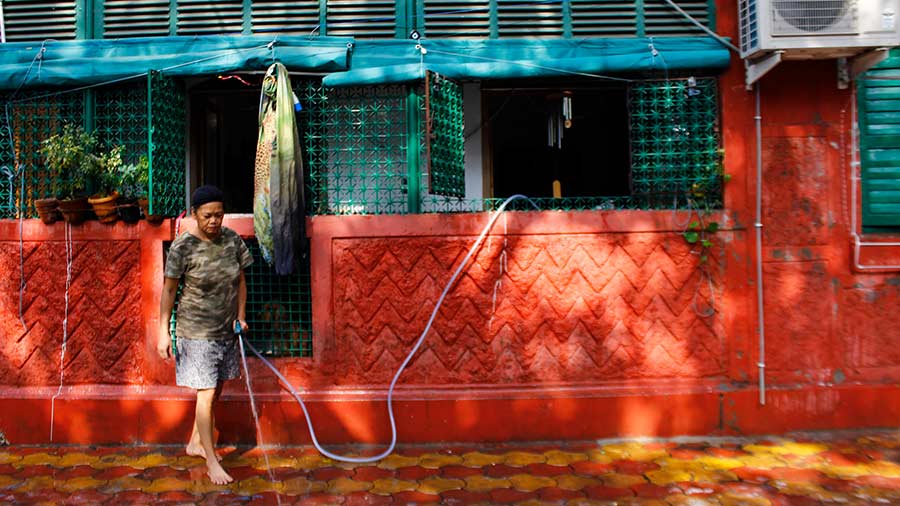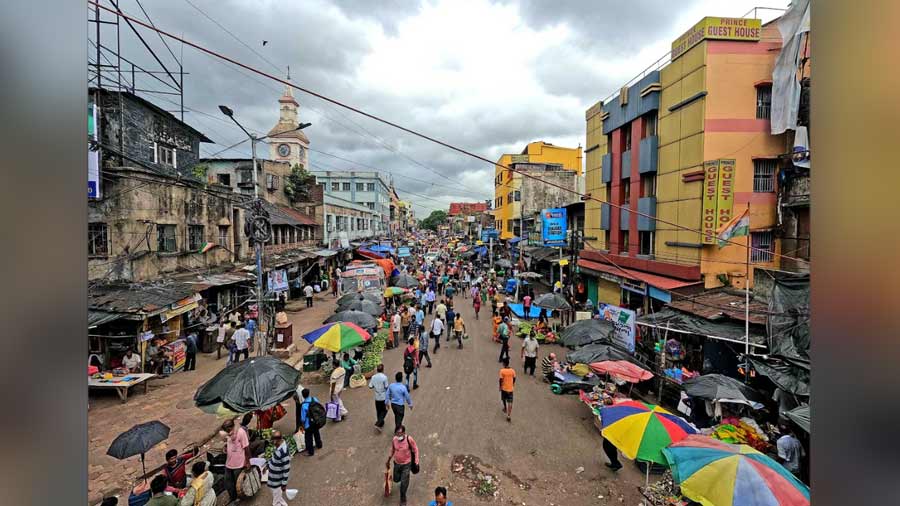The first thing one notices is the sea of blue ahead. Standing at the starting end of the aptly named Nil Madhab Sen Lane, one cannot help but stare at the rows upon unending rows of jeans hanging on clotheslines and wonder if it’s denim heaven. Or, perhaps, the sets of The Outsiders.
Nil Madhab Sen Lane, or ‘Jeans gully’, as it is colloquially referred to, is a unique section of Kolkata that has to be seen to be believed. Nestled near the intersection of MG Road and Central Avenue, this bylane is home to families of cloth traders and restorers with a special area of expertise. Discarded, forgotten, and unsold jeans and dungarees from haats all over the city make their way here, where they are given new life.
Old to new
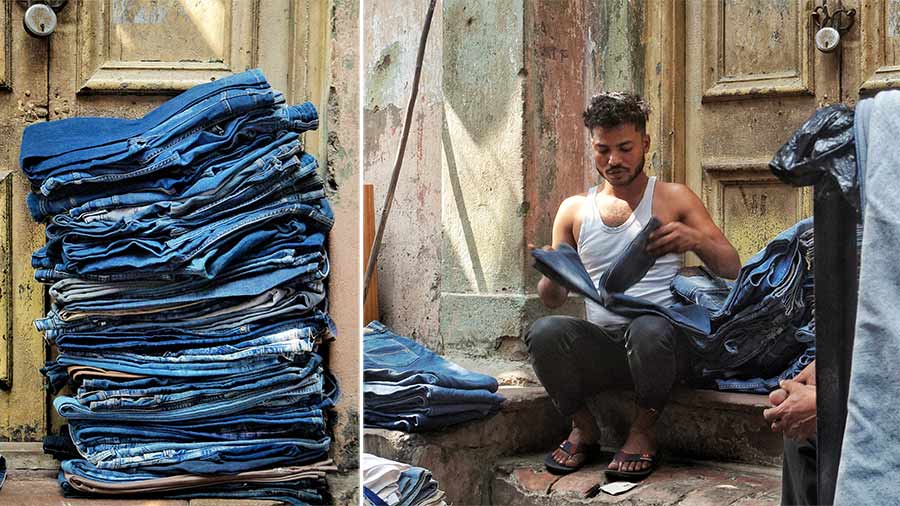
Each piece delivered to Jeans Gully goes through a process of repairs, dyeing and more to create a new product
First, each piece that is delivered — and there are hundreds every day! — is checked thoroughly for any defects, imperfections, or areas which need maintenance. “The material we end up working with is often cut, or torn, so we have to sew and repair the denim,” says Mohammad Ilyas, who was working in his shop when we asked if we could shadow him for a while as he went about his work. “After that, we thoroughly clean, wash, and scrub every piece before we can get to the dyeing,’ he explains.

The first step is a good wash
Any item deemed not restored well enough is carefully selected and taken to be dyed. Tubs of dye are set up for the denims to be given a proper workout. It is a wonderful, almost mesmerising process, to observe as the pieces start taking on colour slowly. A by-product of this is a stream of royal blue water that runs by the side of the road as the dyeing takes place.

One of the byproducts of dyeing is the rivulets of blue that run down the street
Once the dyeing is complete, the jeans are all piled up and hung to dry in rows of clotheslines. This is the stage in the process that results in the iconic ‘Jeans gully’ look which has gone viral on many Instagram reels now.
“After this ‘finishing’ is complete, we hand them over to a third party, who then takes them to sell. Our jeans are sold in Bihar, Bengal… almost everywhere now,’ says Ilyas, who has been very kind with his time.
Third-party sellers and middlemen come to collect some of the jeans when they are done, and take them away to sell all over West Bengal, and in several other states. The rest of the pieces are sold here, in shops in the lane itself, belonging to the families who work here.
How it all began

The excess dye drips off the denim, and when they are completely dry, they are ready for distribution
Mohammad Younis, who Ilyas runs a shop with, was keen to talk about the history of the place.
“All of us working here have probably only started dealing with jeans for about 10 or 12 years now. We used to make and sell clothing sets earlier — for men and women — but gradually, the demand started to go down. That is when we started working with jeans,” explains Younis.
It wasn’t all smooth sailing, however, says the duo. “We first started off selling in and around Sealdah station. Things were going well, but we ran into some trouble with the other existing merchants who used to sell their wares there. Eventually, we came to an agreement with these middlemen, who would take our jeans and sell them all over Kolkata. Now, of course, our distribution has reached far and wide. We even get international orders!” he says.
As we chat in the shop, we are occasionally greeted with customers. Business is swiftly done, as Younis knows exactly where every kind of jeans is kept. Ripped, faded, blue, grey, black, you name it.
“We can sell a very good quality pair of jeans for R 150, that is the exact same as some expensive branded piece you might wear. Not everyone can afford to buy brand new clothes all the time, and we are here for that,” Younis says when talking about the affordability of the jeans ‘made’ here.
Fame and the future
A few years ago, ‘Jeans Gully’ went viral on social media platforms, and ever since, the area is oft-visited by photographers, videographers, and filmmakers wishing to capture its unique charm. When Younis says that foreign photographers had once come to take pictures of the gully, and those photographs were displayed in an exhibition in Japan, he is proud, but also very sanguine.
“These people come here, take photographs and shoot reels, and go back. But what of us? This is our work, and for us, life goes on, doesn’t it?”
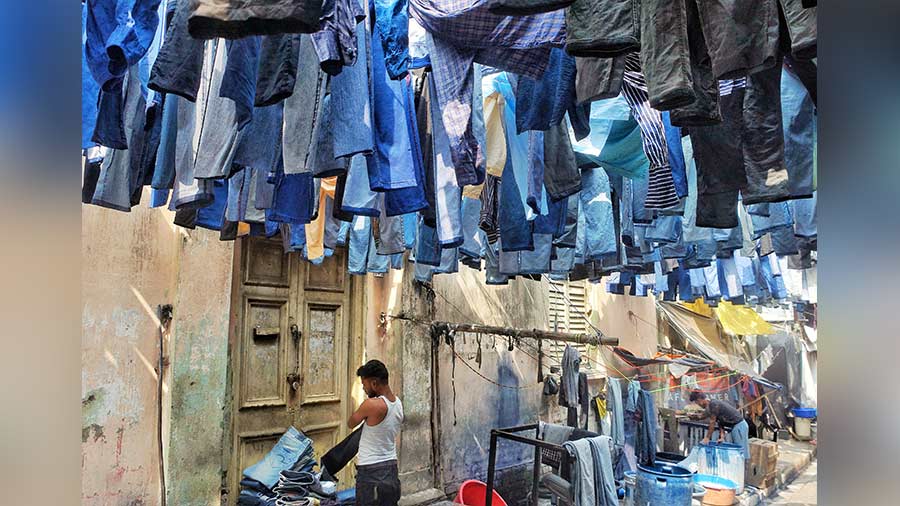
People like Ilyas and Younis who work at Jeans Gully are just glad that the community survived the pandemic lockdowns
When we bring up the COVID lockdowns, Younis reluctantly talks about how that was an extremely challenging time. “We had to shut down all our work and our shops. There was nobody there to buy our stuff, after all. What would have been the point?”
Younis wants to focus on the fact that they survived it, however, and after this wistful moment, is pressed to assure that he is grateful that the work they do is enough to feed them and their families, and the children who grow up here.
And what of the children who grow up here? Do they also wish to continue the family business?
“The truth is, the kids here don’t really want to do this work. And we wouldn’t want them to, either. They are going to school, and college, and studying so they can make something of themselves,” says Younis. “We all want to see our future generations have a better life than what we had,” he smiles. “Doesn’t everyone want that?”
